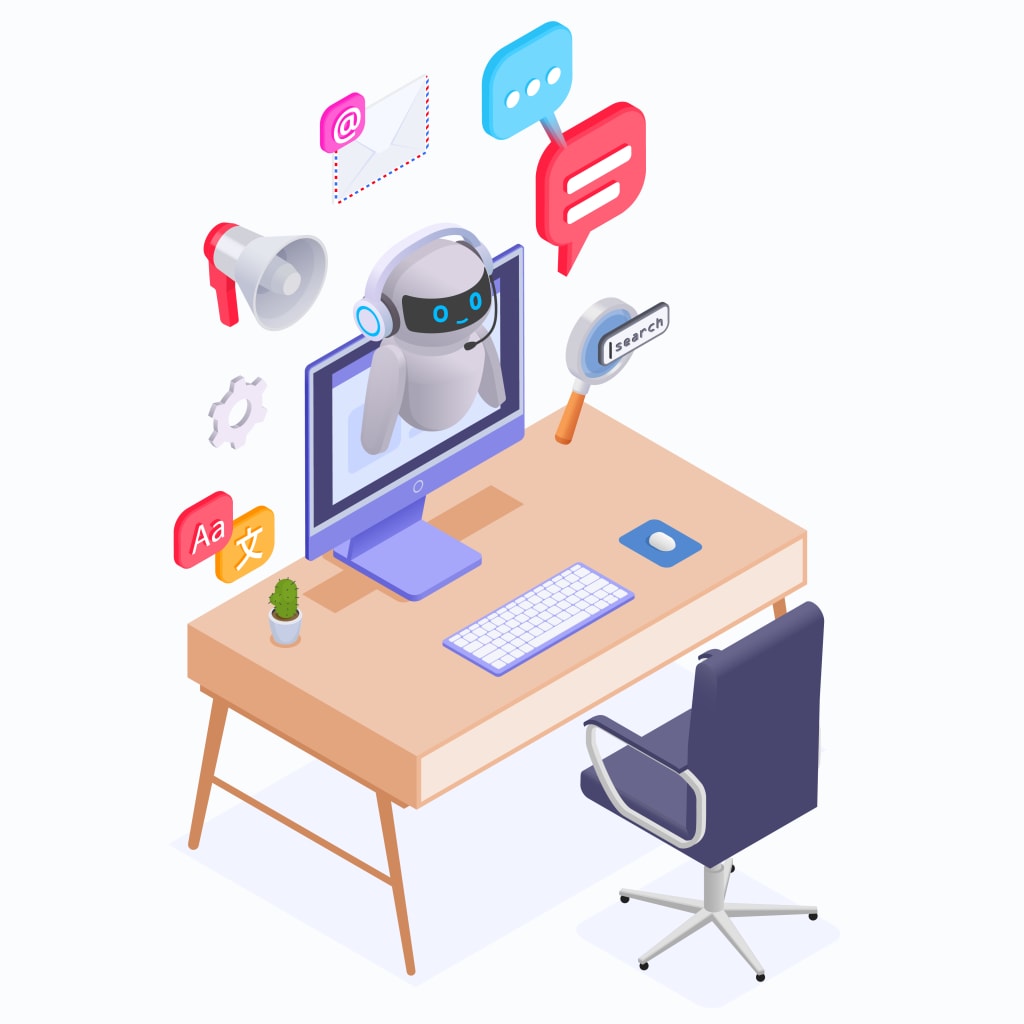How AI is Shaping the Future of Customer Service
AI for Customer Service

Customer service is one of the significant fields that AI has been disrupting lately, with innovations such as chatbots, virtual assistants, and machine learning. Such technologies can help businesses extend support to their clients around the clock, manage a larger number of inquiries, and offer highly customized experiences en masse. This way, AI takes the burden of basic tasks and relieves agents to work on critical problems, thus escalating response rates. In this blog, you will see how deeply AI for customer service has been reconsidered and what role it plays in further customer experience transformation.
1. Software Robots
One of the important AI breakthroughs is a software robot that assists human agents and guarantees the timely processing of customer requests. NLP and machine learning are employed in AI chatbots to analyze human-generated content and provide fit responses. While traditional chatbots are programs with pre-recorded scripts to greet users, answer questions and initiate new features, today’s AI-incorporated bots are smarter. They can help users navigate a website or mobile application. For example, AI in H&M is applied to deploy chatbots to interact with customers in case of inquiries, direct customers to the right clothes, and give general advice concerning fashion.
Helpful Tip: Ensure your chatbot is compatible with the consumer relationship management (CRM) software and the service database. This integration allows the AI chatbot to analyze customers' behavior and perform query processing efficiently.
2. Personalized Recommendations
When used by companies, AI can recommend products and services to customers, thereby improving customer satisfaction. For example, Amazon uses AI to help make product recommendations based on previous activity or purchases made by customers, which has boosted sales and customer happiness. When a customer is likely to leave, AI for customer service can suggest products they may be interested in or have bought before.
Helpful Tip: Connect your AI-powered recommendation system to data acquisition and analytic systems. Make it clear to customers how their data will be processed to avoid any issues of weak transparency.
3. Voice Recognition
Voice command systems are also advantageous over typing, as they are less work and time-consuming. Using the internet, Palocreative identifies that approximately 71% of all consumers prefer using voice-based search systems. Big organizations such as Google utilize AI voice recognition in their customer experience provision through Google Assistant, as it performs user request analysis proficiently.
Helpful Tip: Integrate voice AI to minimize manual handling of customer services while the proficient personnel attend to core business responsibilities.
4. Multilingual Support
AI assists companies in communicating with their customers in their respective languages. For instance, Microsoft’s AI translator can translate messages to and from multiple languages to help businesses improve their relations with customers and thereby retain them.
Helpful Tip: When adopting multilingual conversational AI, ensure you understand your customers' profiles and native languages. This will help you provide improved customer service and enhance their overall experiences.
5. Self-Service Portals
Self-service portals instantly respond to customer queries through voice or text without the input of human agents through machine learning and natural language processing. Currently, IBM Watson's self-service assistance is in the form of FAQs, subtopics, search queries, and Informational guides that can be changed occasionally depending on what the users suggest.
Helpful Tip: Ensure that the self-service portal is easy to use and does not require a lot of user input. Also, ensure the search function is working properly and returning correct results for users’ queries.
6. Automated Language Translation
AI-based systems can often translate languages with a high degree of accuracy, which enables businesses to provide services to a global audience. For example, Airbnb has applied AI for customer service to translate languages so that hosts and guests can easily hold conversations despite coming from diverse linguistic backgrounds.
Helpful Tip: To increase the AI's effectiveness, periodically incorporate new dialects and languages into the model. Implement a feedback system to allow customers to give feedback about the quality of the translation.
Conclusion:
AI continues to transform customer service given the positives it brings in efficiency, individualized service, and worldwide access. Technologies like software robots, targeted content, voice recognition, multilingual assistance, self-service portals, and automated language conversion help answer queries quickly, enhancing customer interest, time-saving, and language issues. This way, AI for customer service would provide better customer satisfaction and loyalty while human agents work on more important tasks. In the future, AI will become even more important as it will shape the customer service industry; therefore, businesses ought to adopt the measures and implement AI solutions to improve customer service.
About the Creator
Enjoyed the story? Support the Creator.
Subscribe for free to receive all their stories in your feed. You could also pledge your support or give them a one-off tip, letting them know you appreciate their work.





Comments
There are no comments for this story
Be the first to respond and start the conversation.